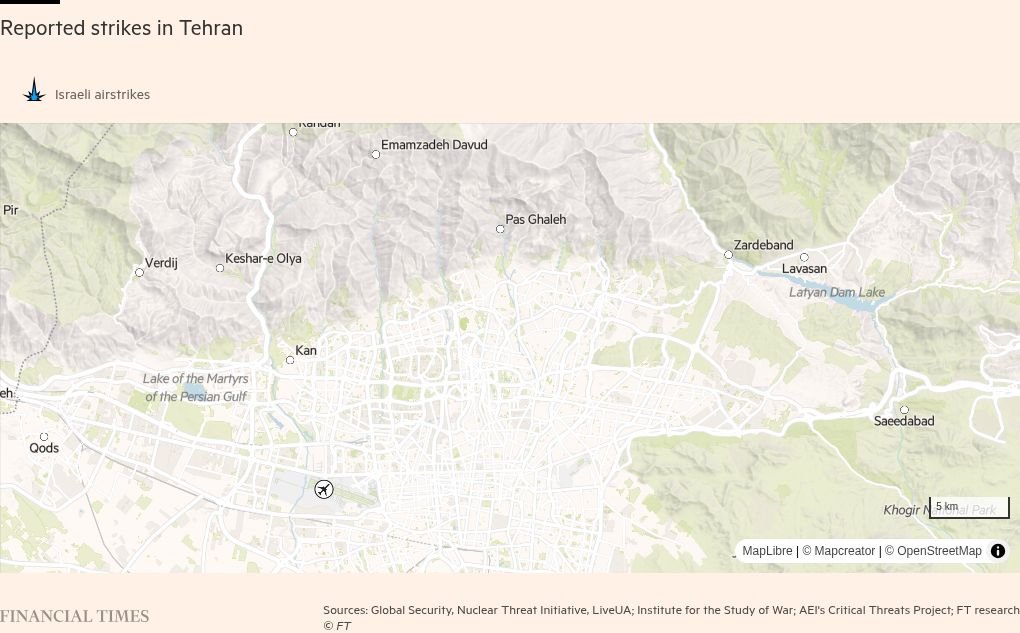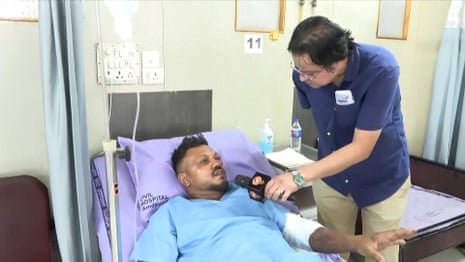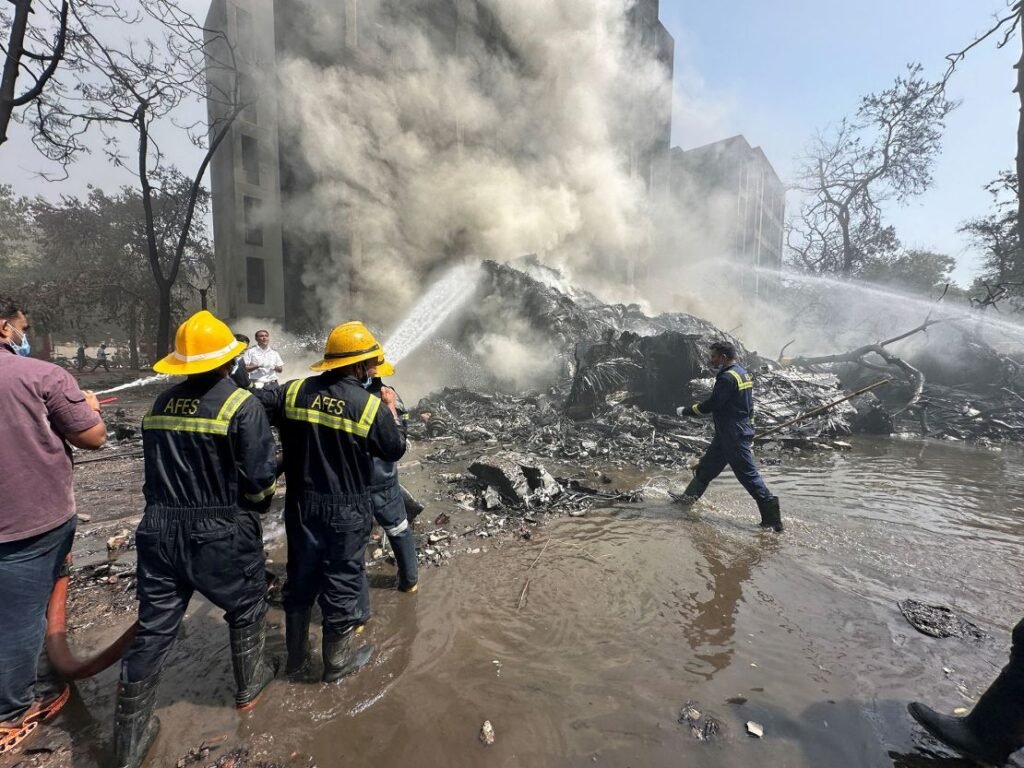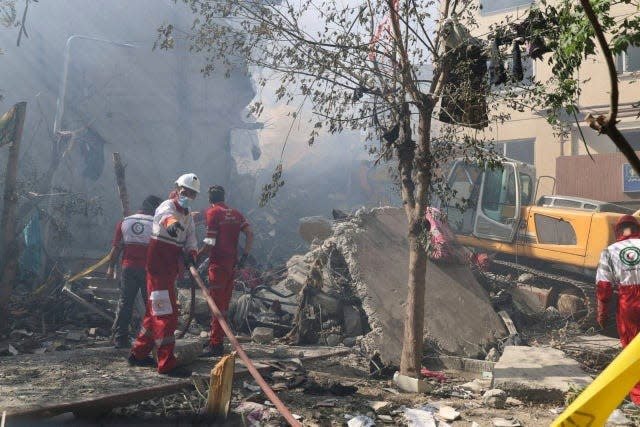A miracle. Stunning. Unbelievable.
These are some of the reactions online and in headlines around the world about Vishwashkumar Ramesh, the sole survivor of the Air India crash that killed 241 people on board and several more on the ground after the plane crashed minutes after takeoff.
The Dreamliner struck a medical college hostel when it crashed in a ball of fire into a residential area of the northwestern Indian city of Ahmedabad Thursday. DNA testing was being conducted to identify bodies that were mostly charred beyond recognition. More victims are expected to be found in the search of the crash site.
And then, there’s Ramesh, who police say managed to escape through the broken emergency exit on the Boeing 787-8 bound for London.
U.K. media have dubbed it the “miracle of seat 11A.” Widely shared video purports to show Ramesh limping on the street in a blood-stained T-shirt with bruises on his face (the video has not be independently verified by CBC News) before he is led to an ambulance.


“I don’t believe how I survived,” 40-year-old Ramesh told Indian state broadcaster DD News from his hospital bed on Friday.
As unbelievable as Ramesh’s story may sound — even to him — it’s happened before. It’s rare, but in recent decades, several other people have been the lone survivors of plane crashes.
And while each of their stories may sound like miracles, one expert says it’s more about a number of unlikely variables aligning.
Stephen Wood, an associate clinical professor at Northeastern University in Boston and expert in disaster medicine and EMS, said it’s “extraordinarily rare” for someone to survive a plane crash of the magnitude of Air India’s. Commercial airliners are engineered for safety, but in catastrophic, high-impact crashes, the forces involved often exceed survivable limits.
“It’s understandable that people are calling it a miracle, given the circumstances,” he told CBC News.
WATCH | Survivor appears to walk away from crash site:
But from a technical perspective, Wood added, survival in these kinds of events is “usually due to a confluence of rare but explainable factors, including the aircraft’s breakup pattern, impact dynamics, the survivor’s position and condition, and sometimes just seconds of timing.”
“In disaster medicine, we refer to this as a ‘sole survivor’ event, and globally, these occur perhaps once every few decades.”
Other sole survivors of plane crashes
There are dozens of sole survivors of plane crashes, on flights big and small, dating back to at least 1929. That’s when Lou Foote, an American pilot, survived when a sightseeing plane crashed near the Newark, N.J., airport, killing 14 people. According to the New York Times, he returned to the skies three months later.
You have to skip forward a few decades to get to sole survivors of larger flights. In 1970, there was Juan Loo, the co-pilot of a Peruvian airliner that crashed and killed 99 people. It had taken off minutes earlier.
In 1971, Juliane Koepcke was 17 when she survived LANSA Flight 508, which killed 91 others, including her mother, when it crashed into the Peruvian jungle after being struck by lighting.


“It was pitch black and people were screaming, then the deep roaring of the engines filled my head completely,” she told BBC in 2012.
“Suddenly the noise stopped and I was outside the plane. I was in a freefall, strapped to my seat bench and hanging head-over-heels… I could see the canopy of the jungle spinning towards me. Then I lost consciousness and remember nothing of the impact.”
She survived the 3,000-metre fall after the plane broke into pieces, plus another 10 days wandering the jungle alone and injured.
There was flight attendant Vesna Vulović, who survived Yugoslav Airlines Flight 367 in 1972. The plane exploded midair from a suspected bomb, killing all other 27 passenger and crew.
According to BBC, Vulović was trapped by a food cart in the plane’s tail section as it fell 10,000 metres to earth. It’s thought that the heavy snow helped cushion the impact.


“Whenever I think of the accident, I have a prevailing, grave feeling of guilt for surviving it and I cry,” she told the Independent in 2012.
More recently, Mailén Díaz Almaguer survived a 2018 plane crash in Havana that killed 112 others. The Boeing 737 went down and erupted in flames shortly after takeoff. Two other women initially survived the crash but died of their injuries.


Children among sole survivors
Sometimes, the sole survivors are children, like Cecelia Crocker — known as Cecelia Cichan at the time of the 1987 crash — who was aboard Northwest Airlines Flight 255 when it crashed in the Detroit suburb of Romulus, Mich., killing 154 people on board, including her parents and brother. She was four.
Crocker said in a 2013 documentary that she thought about the crash every day and that she had scars on her arms, legs and forehead. She had also gotten an airplane tattoo on her wrist.
Bahia Bakari, then 12, lived through a flight that crashed near the Comoros islands in 2009. Yemenia Airways Flight 626 crashed into the Indian Ocean between the southeastern African coast and Madagascar. The other 152 passengers, including Bahia’s mother, all died.


After the plane plunged into the ocean, she grasped a floating part of the destroyed plane and stayed in the water for more than 11 hours before being saved by fishermen.
Bakari was taken to hospital in the capital, Moroni, then repatriated to France. She suffered a broken collarbone, a broken hip, burns and other injuries.
Ruben van Assouw survived the Afriqiyah Airways Airbus that crashed on approach to Tripoli, killing 103 passengers and crew on May 12, 2010. The nine-year-old Dutch boy was still strapped to his seat, unconscious but still breathing, his legs shattered amid the debris scattered in the Libyan desert sand.
He was traveling home from a safari with his parents and brother and learned that he was the sole survivor only days later.
‘Survival doesn’t always bring resolution’
Ramesh, the Air India survivor, suffered burns and bruises and has been kept under observation, an official at the Civil Hospital in Ahmedabad told Reuters by phone, requesting anonymity. Ramesh also lost his brother in the crash.
“His escape … and without any grievous injury, was nothing short of a miracle. He also realizes that and is a bit shaken by the trauma of it, too,” the official said.
Several critical variables had to align in this case for him to survive, suggested Wood, the disaster medicine expert.


First, Ramesh’s seat, which was near an emergency exit over the wing, may have placed him in a structurally reinforced zone. Second, the angle and speed of impact may have created a “survivability pocket,” or an “isolated area within the fuselage that was not crushed or engulfed in fire,” Wood said.
Finally, factors like being properly restrained, remaining conscious and leaving the area quickly may have contributed significantly, he said.
“These are all rare circumstances that would need to come together precisely,” Wood said.
George Lamson Jr., then a 17-year-old from Plymouth, Minn., was on a Galaxy Airlines flight that crashed in Reno, Nev., in 1985. Of the 71 passengers and crew on board the charter flight, he was the only survivor.
Lamson in a social media post Thursday said the news of a plane crash in India with only one survivor shook him.
“These events don’t just make headlines. They leave a lasting echo in the lives of those who’ve lived through something similar,” he wrote.
“Survival doesn’t always bring resolution. Life keeps unfolding after something like that, and the weight of it can show up years later in ways you don’t expect.”
WATCH | A survivor’s story:






